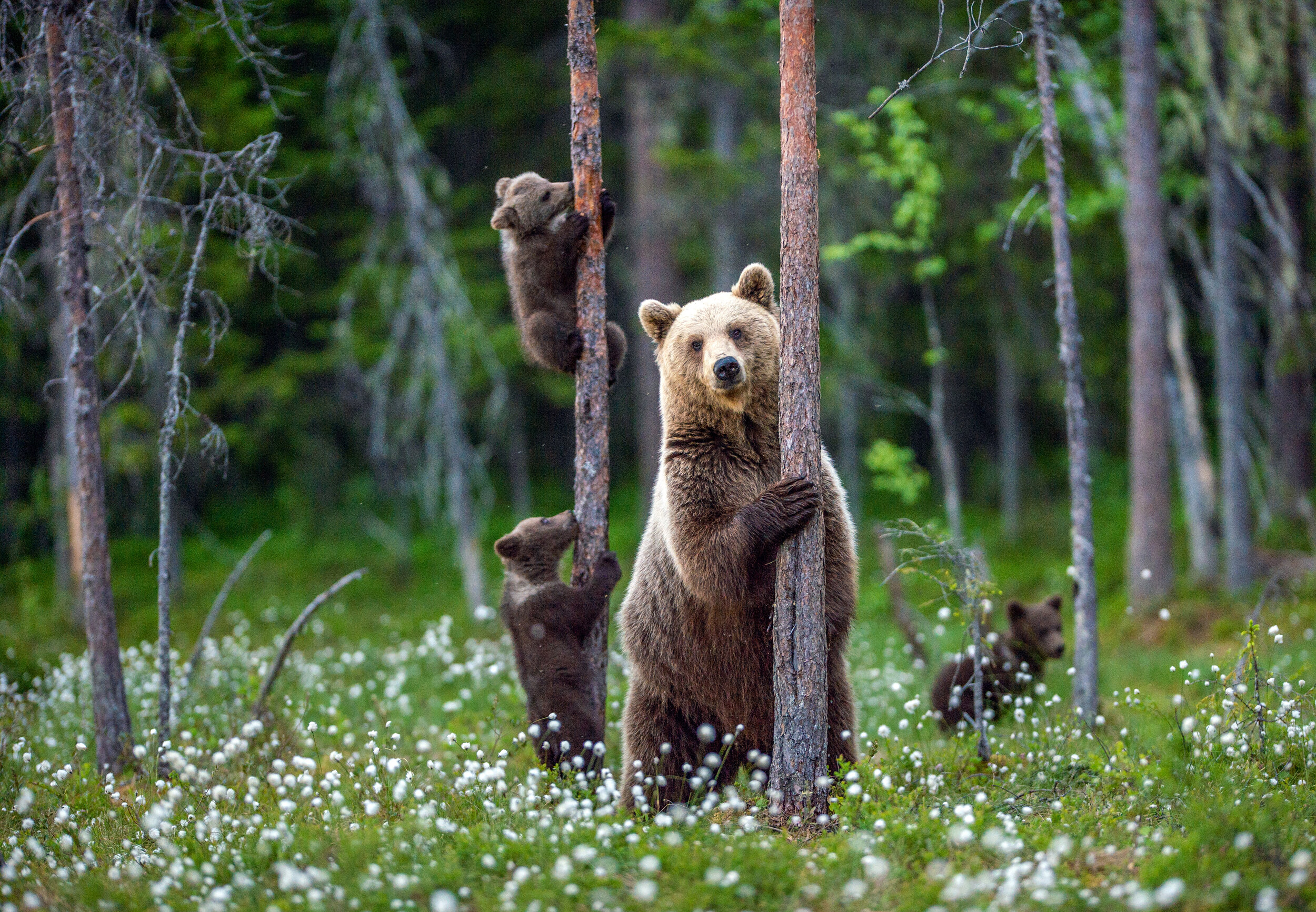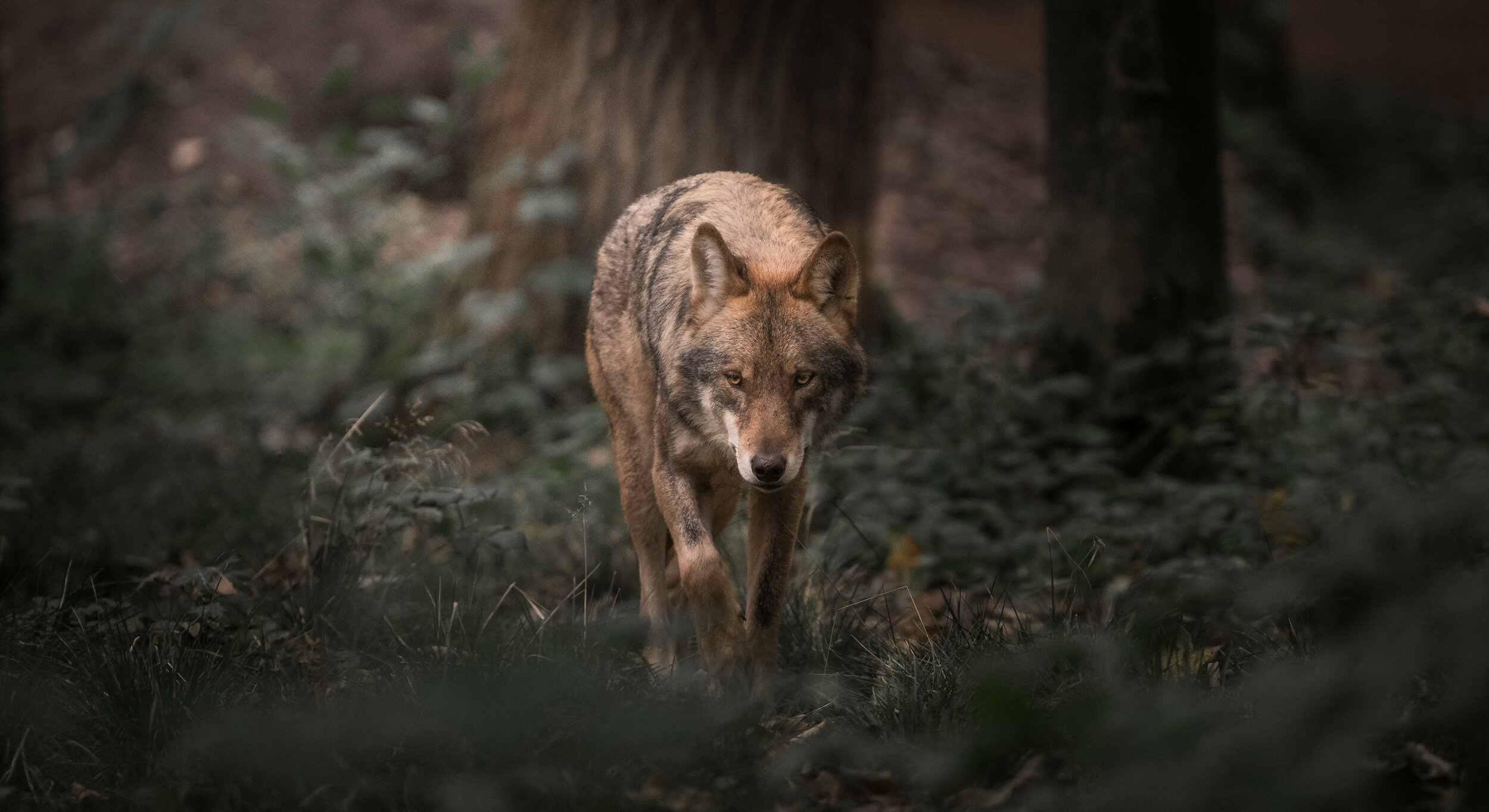Think of wildlife tourism, and what is the first thing that comes to mind? Perhaps you picture yourself on safari watching a herd of trumpeting elephants march across the open savannas of the Serengeti. Maybe trekking through the dense forests of the Amazon basin in hopes of spotting the highly elusive jaguar is more your cup of tea. Whatever and wherever you imagine, it probably doesn’t belong on this continent. In the Czech Republic, we tend to believe that the greatest wildernesses and creatures are half a world away. So it may come as a surprise to learn that Europe is actually home to some of the most fascinating animals to roam the planet, with some species inhabiting places located practically on our doorstep.
Travel to Bodø or Tromsø in northern Norway and you’ll have the opportunity to witness an incredible variety of marine life, including orcas, sperm whales, humpbacks, porpoises, and even the largest animal ever to have lived on Earth, the blue whale. Head southwest to the Andalusia region of Spain and you might spot ibex and flamingos, or perhaps even be lucky enough to catch a rare glimpse of one of the world’s rarest cats, the Iberian lynx.
But a little closer to home lies a real gem. The Tatras (specifically the High Tatras) occupied the top spot on Lonely Planet’s list of ten essential European destinations for 2019. Situated around 550km east of Prague, the almost mythical landscape comprises a towering realm of jagged peaks and tumbling waterfalls, with a spectacular array of flora adorning the rugged terrain and formidable beasts, including the iconic European brown bear, roaming the fertile forests.
By the end of the 20th century, hunting, deforestation and human-wildlife conflicts had caused brown bear populations to disappear from much of their original range in Europe. Conservation efforts succeeded in halting the decline and in some parts of the continent, bear populations are now recovering. Slovakia has become somewhat of a stronghold, hosting a growing population of around 1,500 bears, with around 130 residing in the Tatras National Park. This has led to a boom in wildlife tourism in the Tatras and now, spotting brown bears in their natural habitat has never been easier. Visitors also frequently observe other native species, including wild boar, deer, marmots, and the endemic and critically endangered Tatra chamois. Those with good fortune may even observe the elusive wolf, lynx, or wildcat.
The health of the ecosystem and great biodiversity in the Tatras is predominantly down to the conservation work being carried out there. One of the organisations operating in the area is the Slovak Wildlife Society (SWS) – a non-profit that focuses on the brown bear, grey wolf, and Eurasian lynx. Established in 1998, and now an active member of the International Union for Conservation of Nature (IUCN) Bear Specialist Group, the SWS’s work entails developing effective measures to reduce human-wildlife conflicts and fostering greater understanding and acceptance of native predators within the surrounding communities.
The increase in the number of brown bears in the area has naturally led to a rise in human-wildlife conflicts, with interactions occurring more frequently due to reasons such as poor storage of refuse. Rare cases in which bears display threatening behaviour are often sensationalised in the media, leading to a heightened sense of fear among the general public. The SWS responded to this situation by launching the B.E.A.R.S (Bear Education, Awareness, and Research in Slovakia) Project in 2003 (www.medvede.sk).
The B.E.A.R.S Project has been providing expert knowledge and assistance to locals in implementing non-lethal measures to prevent conflicts, including livestock-guarding dogs, electric fences, and bear-proof bins. Further, the scientific research carried out has provided authorities with a sound basis for effective management decisions, in addition to contributing information for educational purposes and awareness campaigns. In fact, the SWS has played a big role in introducing conservation to the community, helping to encourage children and young people to take an active interest in nature at “Bear Camps” and other outdoor activities, hosting photographic exhibitions, and organising seminars and workshops.
But the work of the SWS extends further than small community projects. Tourists venturing to this increasingly popular destination have the opportunity to book walking and biking tours where they can witness the bears and other wildlife amid the stunning scenery of the Carpathians.
Tourists are guided by locally based wildlife experts with decades of experience combining responsible ecotourism with conservation research. As specialists in large carnivores, the SWS guides provide guests with detailed insight into the lives of animals and the challenges they face. Visitors exploring the extensive forests, mountains, and meadows will learn about their ecology and the conflicts with human interests that threaten their long-term survival. Participants can even play an active role in conservation through helping with fieldwork, which includes measuring and recording the tracks of bears, wolves, and lynx; collecting samples for genetic analysis; and monitoring animals with trail cameras.
Tours typically last six hours and cost €90 (around 2,300Kč) per person (based on two people booking a one-day tour together). The fees go directly to fund conservation and support the SWS’s continued efforts to protect wildlife and habitats from the growing pressures of development. It is the belief of the SWS that sustainable tourism can help demonstrate to local communities the value of the natural environment around them. These efforts, combined with their intensive education work, can help change the negative perception of bears and wolves from being animals that should be feared and reviled to being animals that local people can be proud of and want to preserve.
Sustainable tourism is all the rage these days, and for good reason. The industry has committed to making a smaller impact on the environment and local culture and ensuring that development is a positive experience for surrounding communities, tourist companies, and tourists themselves. By planning a trip to the nearby Tatras and booking wildlife tours with conservation groups such as the SWS, not only can you enjoy an unforgettable vacation in glorious settings, but you’ll also be doing your own small part to help conserve some of the flora and fauna that make the natural world so wondrous.
Wildlife of the Tatras National Park
Photo by Uryadnikov Sergey / Adobe Stock
European Brown Bear (Ursus arctos arctos)
Diet: Bears are omnivorous, meaning they eat a wide variety of foods – from grass, fruit, insects, roots and bulbs of plants to carrion.
Population: Around 130 in the Tatras National Park and surrounding areas (approximately 1,500 in Slovakia).
Life Expectancy: Maximum 30 years in the wild.
Size (adult): Height 70-150cm (at shoulder) / Weight 80-350kg
The European brown bear is one of the most common subspecies of brown bear and can be found across much of Eurasia. Large territories and a secretive lifestyle make it hard to determine their exact number, but there are estimated to be around 1,500 individuals distributed mostly across the central and northern mountains of Slovakia. Besides females with young, they usually lead a solitary life, but sometimes gather to feed at seasonally abundant food sources such as fruit trees. Bears start hibernating around November and are inactive from December to February or March, so now might be your last chance to see them this year.
Photo by Dennis / Adobe Stock
Eurasian Wolf (Canis lupus lupus)
Diet: Predominantly red deer, roe deer, and wild boar. Occasionally also prey on livestock.
Population: Around 50 individuals in the Liptov region.
Life Expectancy: On average 6-8 years. Maximum 13 years.
Size (adult): Height 80-85cm / Weight 36-45kg
Native to Europe and the forest and steppe zones of the former Soviet Union, the Eurasian wolf is a subspecies of grey wolf, which can also be found in North America. The population of Eurasian wolves in Slovakia is estimated at around 400 individuals, with many of the packs forced to subsist largely on livestock and refuse in areas with dense human activity. They are a highly social animal whose basic social structure consists of a mated pair and their adult offspring. Packs are typically made up of a family of five to 11 animals, but large packs with numbers exceeding 40 wolves have been recorded in some parts of the world.
Photo by JUAN CARLOS MUNOZ / Adobe Stock
Eurasian Lynx (Lynx lynx)
Diet: Mostly roe deer and brown hares, but may also take chamois, foxes, rodents, and birds.
Population: Around 15-20 in the Tatras.
Life Expectancy: Up to 14 years
Size (adult): Height 70cm / Weight 18-30kg
The Eurasian lynx is a widely distributed medium-sized wild cat that inhabits forests up to an altitude of 5,500m in Northern, Central and Eastern Europe. Its range also extends to Central Asia and Siberia, the Tibetan Plateau and the Himalayas. With an estimated global population of 10,000, approximately 200-300 Eurasian lynx prowl the mixed forests of Central and East Slovakia. These stealthy felines are incredibly secretive and their quiet nature has caused their presence in an area to go unnoticed by humans for years.
Photo by WildMedia / Adobe Stock
Tatra Chamois (Rupicapra rupicapra tatrica)
Diet: Mainly grass, herbs, and leaves in summer, plus sprouts and bark of trees as well as lichens in winter.
Population: 1,300-1,400
Life Expectancy: Up to 15-17 years
Size (adult): Height 70-80cm / Weight 25-45kg
The critically endangered Tatra chamois is a subspecies of Alpine chamois and inhabits all parts of the Tatras. They are protected by the national parks in both Poland and Slovakia. From 1999-2000, populations of these slender bovids dropped below 200 individuals, but a five-year programme initiated in 2001 to save them has since seen the species recover. Today, the population stands between 1,300 and 1,400 individuals, which are the highest numbers of Tatra chamois in recorded history. They tend to frequent alpine meadows, cliffs, and boulder fields above the treeline at 1,700m.




